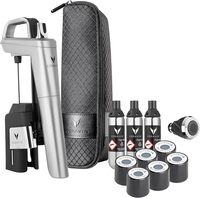Wine tasting is both an art and a science, combining sensory analysis with knowledge of viticulture and winemaking. While it might seem intimidating to novices, mastering a few key techniques can dramatically enhance your appreciation of wine and help you identify qualities that might otherwise go unnoticed.
Professional sommeliers follow a methodical approach to tasting that engages all the senses. The process begins before the wine even touches your lips, with a visual assessment. Hold your glass against a white background and observe the color and clarity. The hue can reveal much about the wine's age and the grape variety—young reds show purple tints, while older wines develop brick or amber edges.
Next comes the swirl, perhaps the most iconic gesture in wine tasting. Beyond looking sophisticated, swirling serves a crucial purpose: it releases aromatic compounds by increasing the wine's surface area and introducing oxygen. The proper technique involves keeping the base of the glass on the table and gently rotating your wrist—this prevents spillage while maximizing aeration.
With aromas now released, it's time for the nose—arguably the most important aspect of tasting. Our sense of smell can detect thousands of different aromas, far more than our taste buds can identify. Take multiple short sniffs rather than one long inhale, which can fatigue your olfactory receptors. Try categorizing what you smell: primary aromas come from the grape (fruit, floral, herbal notes), secondary aromas develop during fermentation (yeast, butter, cream), and tertiary aromas evolve during aging (nuts, leather, earth).
Only after this thorough assessment should you taste the wine. Take a small sip and let it coat your entire palate by drawing in a bit of air—this further releases flavor compounds and allows you to perceive the wine's full spectrum of tastes. Pay attention to the progression from initial impression (attack) to mid-palate and finally the finish, noting how flavors evolve and how long they persist.
Consider the wine's structural elements: acidity (detected on the sides of your tongue), tannins (the drying sensation in red wines), sweetness (on the tip of your tongue), alcohol (warmth in your throat), and body (the weight and viscosity in your mouth). The balance between these elements largely determines a wine's quality.
Finally, evaluate the finish—how long do the flavors persist after swallowing? Generally, longer finishes indicate higher quality wines. The most memorable wines evolve in the glass, revealing different dimensions with each sip and maintaining a lengthy, pleasant finish.
With practice, these techniques become second nature, transforming wine drinking from simple consumption to a rich, multisensory experience. The true joy lies not in identifying the most flavor notes, but in developing your own sensory memory and preferences—discovering what speaks to your particular palate.

